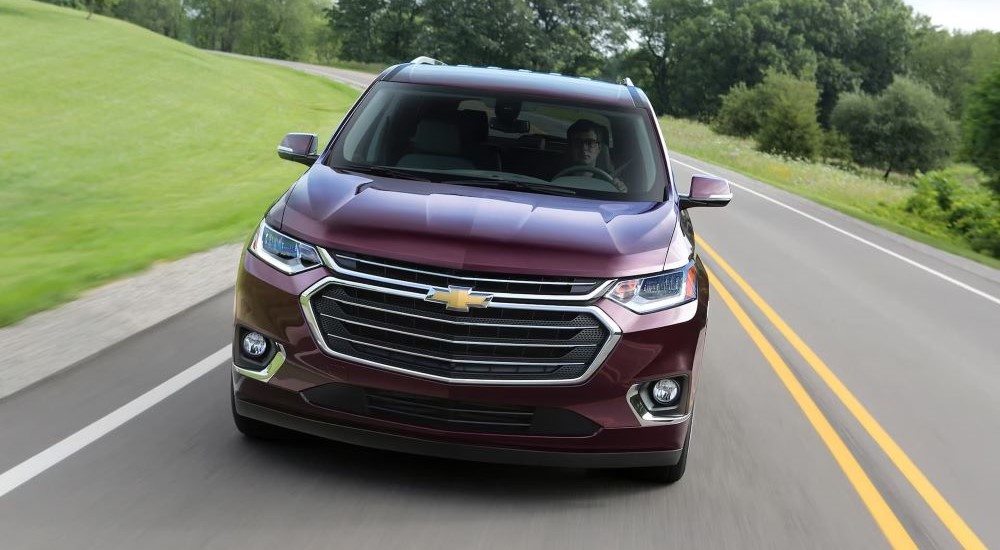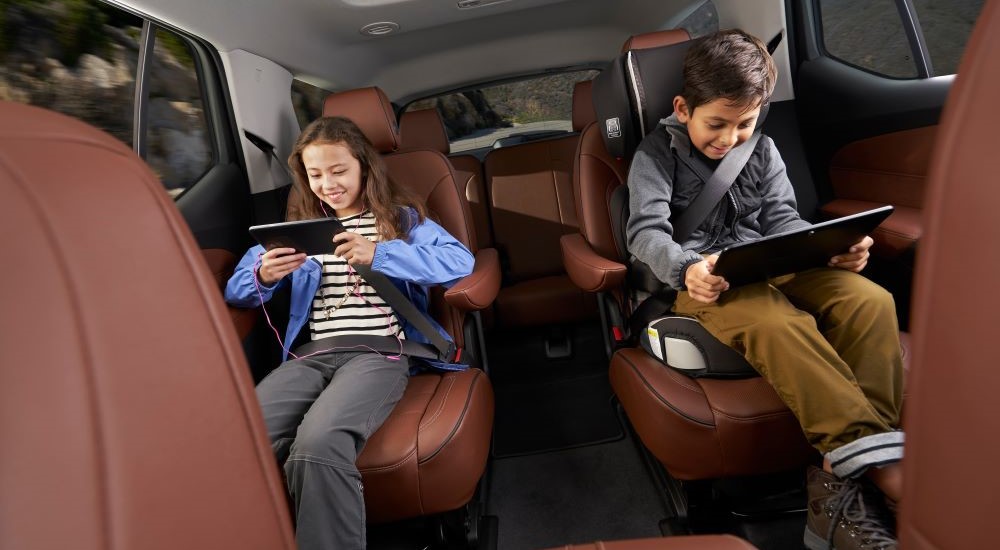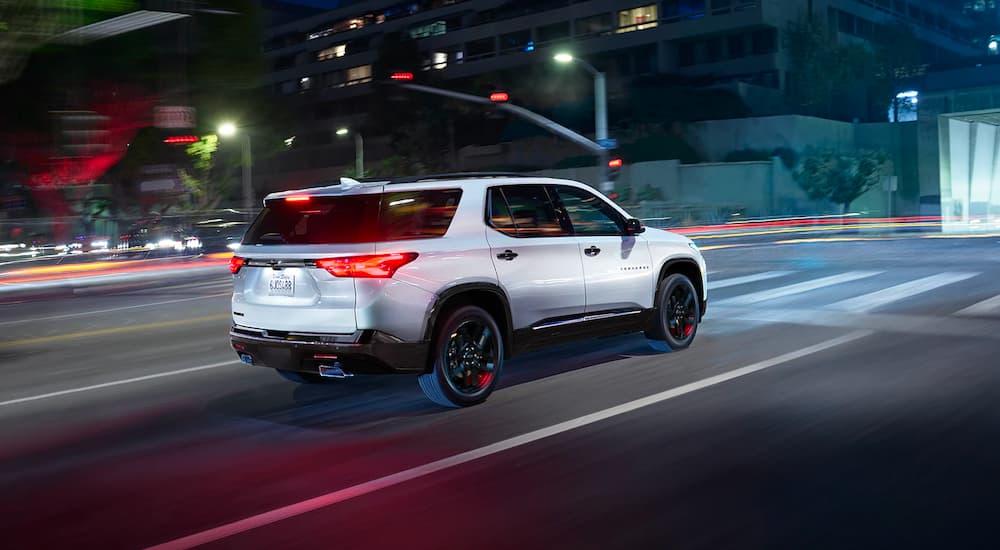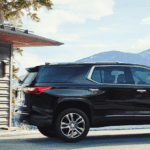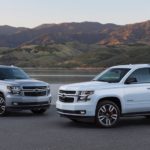Between minivans, compact crossovers, midsize crossovers, and large SUVs, it can be difficult to tell them apart outside of size and shape. Depending on the size of your family or the activities and hobbies you like to do when you’re off the clock, you may gravitate toward one or the other. In fact, you might have at one time had a minivan or an SUV but have decided you need to trade in your older model for a new one. But when comparing a minivan and a Chevy Traverse for sale, you might wonder, “Isn’t the Traverse basically just a quality minivan?”
At first glance, you might be hard-pressed to answer that question. You might compare the shape and size, seating, or features, but it can be difficult to ascertain how similar these vehicles are—or how different. Some similarities and differences are easier to see, while others take some inspection because they’re smaller or hidden away beneath the hood or inside the body. In some ways, the Traverse and a minivan are similar, but on the whole, the answer is no—no, the Chevy Traverse is not like a minivan. Want to know why? Look at the key areas below to see the difference between a modern minivan and the Chevy Traverse.
A Sturdy Build
Most drivers will look at seating arrangements first when eyeing a new vehicle, and there’s a lot of sense in that; you need to know how many seats you have so that everyone can fit in one vehicle. Sure, you could take two vehicles, but after a while, that gets old, and it’s nice to have the option to take everyone along to holiday parties, birthday celebrations, and vacations. Spontaneity is far easier with one unit of transport.
You might not notice the ride height, extra accessories, and towing capacity at first. Take a look at a minivan; they’re built low to the ground and are excellent for driving around town, running errands, going to appointments, and dropping kids off at school. They’re built for city and suburban life, which works well for the average family. However, SUVs like the Traverse are equipped to handle more robust activities across various terrain. Since it stands higher off the ground, off-road trails become a possible realm of exploration. Roof racks, towing packages, and other features that come standard with some SUVs allow a family to spend more time outdoors together, whether you’re towing a pair of jet skis or you’ve lashed a kayak or canoe to the roof.
Since SUVs also tend to be lighter in build, with a wider stance, they can be more fuel efficient as well as more powerful than a regular minivan—although, of course, it does depend on size and model. If you’re looking for something with easier access and more abilities and opportunities for off-road explorations, then something like the Chevy Traverse is just the ticket.
Maximized Space
Though minivans and SUVs have similar seating occupancy, the layout can differ drastically. The Chevy Traverse, for instance, can seat up to eight people, but since it has a wider stance, there’s more elbow and leg room—even for those who sit in the back seat. Minivans typically seat seven or eight passengers, but space in the back can be narrower than in SUVs. There also tends to be more storage space in SUVs, from pockets to side cargo areas to consoles to the trunk. The Chevy Traverse has ample room for phones, tablets, backpacks, purses, cups, and grocery bags, and if you fold down the back seat, you have even more room for things like furniture, boxes, luggage, camping equipment, and more.
Space does make a difference; because of the height and width of the Traverse, it feels more open and airy—especially because, even in the backseat, there’s room to stretch, climate control, and room for all the road trip goodies. Even if you only have five people inside, one person can take the whole backseat to themselves and lie down, which is especially helpful for tired kids and queasy riders or a large pet. Even without the backseat being folded down, there’s more trunk space available in an SUV than in a minivan, and some drivers choose to add a cargo management system so that the back is covered, separated by nets, and split into sections. However you look at it, though the size might at first seem similar, the way it is laid out makes an enormous difference—from tip to tail and top to bottom.
Pumped-Up Performance
What if you had a powerful engine, but your vehicle was so large that the engine had to put most of its energy toward powering the vehicle? Unfortunately, this does happen with minivans because they’re rather heavy and bulky—this isn’t to say that all minivans are like this, but it does happen more often than with SUVs. While SUVs may not have engines as powerful, they also don’t have to direct most of their energy toward getting going and can instead divert to other things like performance.
The Chevy Traverse performs especially well and quicker than many of its counterparts. Thanks to the V6 engine, the Traverse has 310 hp to work with, and—being paired with a nine-speed automatic transmission, automatic stop/start, and easy steering—it drives like a dream and handles particularly well at high speeds. In fact, the Traverse can go from zero to sixty in less than seven seconds. Some of the fastest minivans can’t beat that time, nor are they particularly suited for high-speed travel.
Not that you will take part in a high-speed chase, but it’s good to know that your SUV can push and has the ability to make quick movements to avoid animals, pedestrians, and reckless drivers. It’s easier to maneuver than a minivan, and with its extra power, it’s a formidable opponent. If you want a vehicle that can fit your entire family and their stuff—while also handling quick turns, parking easier, and speeding up when required—then the Chevy Traverse is an excellent option.
Key Differences, Big Impact
There’s nothing wrong with a minivan; many, many drivers have chosen one, and it suits them perfectly. They are great for on-road adventures and daily life, and there are hybrid versions for those looking to decrease their carbon footprint. However, they are not the same as SUVs. SUVs have become more popular over time because of these differences in design, interior space, and build, among other things, like color availability, wheel size, configuration, packages, and extra features.
Curious about the Chevy Traverse and how different it is? Take a look next time you see one. You’ll be surprised at how much room is available for cargo and seating space, and you’ll notice how the build and interior work together to create an atmosphere of openness and quiet calm. Doesn’t that sound incredible? You can step right into the Traverse, start it up, and know that—wherever you’re going, whether it be the highway or roads less traveled—your SUV can handle it. This is perhaps the biggest difference between a minivan and an SUV like the Traverse.
The Chevy Traverse is a roomy, powerful, more adventurous choice over a minivan, so if you feel like you’d enjoy spending more time going on adventures in a spacious vehicle that can handle different terrains, then the Traverse is definitely worth taking a look at.
